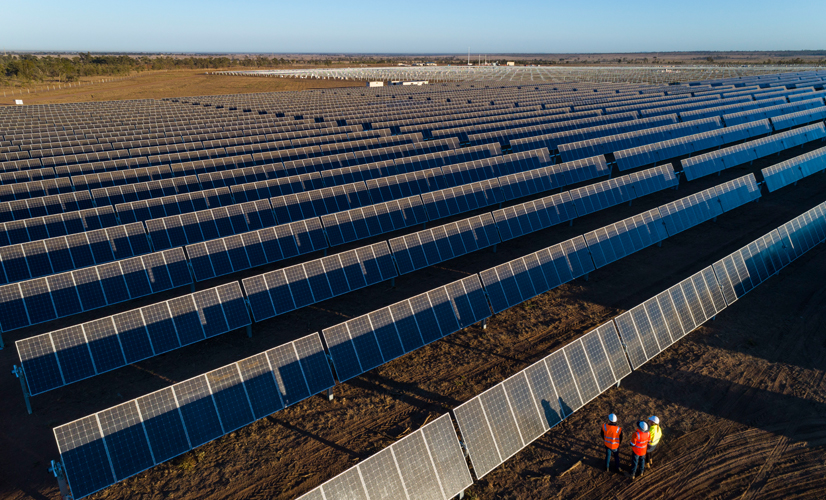Adani Renewables Australia’s Rugby Run Solar Farm has started feeding electricity into the grid seven months after construction was completed. The 65 MW project provides an example of how grid connection issues are hindering new generation capacity from joining the electricity supply system.
The plant located near Moranbah, central Queensland, is expected to ramp up to full operation in the months ahead and deliver 185,000MWh of electricity annually. The project features 247,000 solar panels and represents the first phase of the Rugby Run solar project, which has the capacity to expand to 170 MW.
The Indian mining giant’s renewables arm will be selling 80% of the project’s output under a power purchase agreement to an Australian electricity retailer. The remaining 20% will be sold on the spot market.
The $100 million Rugby Run project was self-financed by Adani. The developer managed construction contractors directly, and not via the EPC contract model. More than 175 people were employed during peak construction periods.
“There are several construction stages within the solar farm delivery process that use skills which are transferrable from other industries, like the mining sector,” Adani Renewables Australia Business Manager Derek Chapman said. “For this reason we were able to use local Queensland contractors from Clermont, Chinchilla, Bowen and Townsville.”
The project is part of Adani’s plan to develop 1.5 GW of PV capacity in Australia. Aside from the Rugby Run project, the developer received planning permission in 2017 for a 140 MW solar farm to be located just outside Whyalla, South Australia. Adani is currently negotiating a PPA which will inform a commercial decision on the project in 2019.
“When there is stability in the regulatory regime and approval processes, Adani Group’s businesses are able to deliver projects efficiently and to the highest standards by drawing on our nimble entrepreneurial culture,” Adani said in a statement.
However, Adani seems to be also fully aware of other regulatory regimes reflected in worsening Marginal Loss Factors (MLFs). After MLFs have resulted in downgrading the output of a number of generators, the developer has officially submitted two rule change requests about how MLFs are calculated and how intra-regional settlement residues are distributed.
The Australian Energy Market Commission (AEMC) is consulting on these rule change requests over the coming month as it seeks to enable broader consideration of the transmission loss factor framework aimed at sending the most appropriate signals to investors in the face of power system restructuring.
This content is protected by copyright and may not be reused. If you want to cooperate with us and would like to reuse some of our content, please contact: editors@pv-magazine.com.









1 comment
By submitting this form you agree to pv magazine using your data for the purposes of publishing your comment.
Your personal data will only be disclosed or otherwise transmitted to third parties for the purposes of spam filtering or if this is necessary for technical maintenance of the website. Any other transfer to third parties will not take place unless this is justified on the basis of applicable data protection regulations or if pv magazine is legally obliged to do so.
You may revoke this consent at any time with effect for the future, in which case your personal data will be deleted immediately. Otherwise, your data will be deleted if pv magazine has processed your request or the purpose of data storage is fulfilled.
Further information on data privacy can be found in our Data Protection Policy.